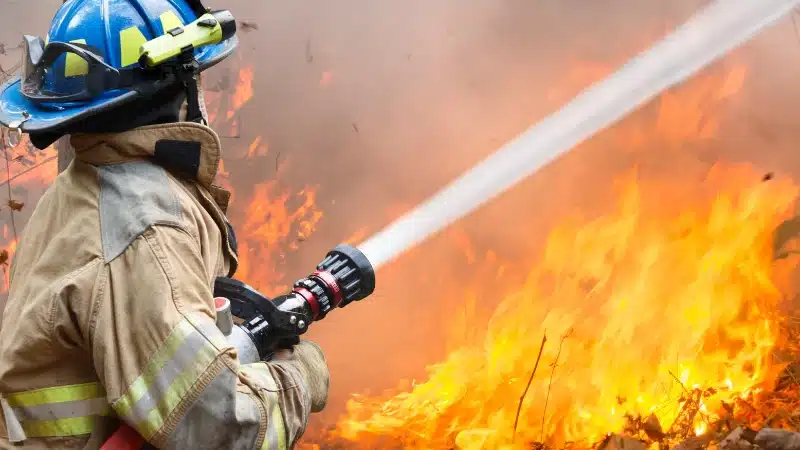
Los Angeles County is in a state of crisis as multiple wildfires rage across the region. On Wednesday, these fires caused significant destruction, leading to the death of 5 individuals and the evacuation of about 100,000 residents. The Los Angeles County Sheriff’s Department has confirmed these figures, highlighting the seriousness of the situation. Among the affected areas, the Palisades Fire has been particularly destructive, worsened by strong winds and resulting in 1,000s of homes being destroyed.
Multiple Fires, Widespread Impact
The Palisades Fire, initially reported at 10:30 a.m. on Tuesday in Los Angeles, rapidly escalated to engulf over 15,800 acres without any containment, as reported by the California Department of Forestry and Fire Protection (Cal Fire). That same evening, the Eaton Fire ignited in the hills above Altadena in northern Los Angeles County, leading to evacuations and claiming five lives. By Wednesday afternoon, the fire had consumed at least 10,600 acres.
Concurrently, the Sunset Fire emerged in the Hollywood Hills on Wednesday evening, necessitating further evacuations, while the Hurst Fire broke out in Los Angeles’ Sylmar neighborhood late Tuesday night, quickly spreading over several hundred acres and prompting additional evacuations. The Lidia Fire, which also started on Wednesday, was reported to be 40% contained. Additionally, the fires have inflicted substantial economic damage, with AccuWeather, a private forecasting service, estimating the cost at over $50 billion.
Firefighters Confront Water Shortages
As the wildfires continue to devastate Los Angeles, firefighters are facing an acute water shortage that is severely hampering their efforts to combat the blazes. Reports from the front lines indicate that multiple hydrants are failing, leading to rapidly depleting water reserves. This critical shortage has rendered firefighters nearly powerless to stop the spread of the wildfires, leaving residential neighborhoods, commercial buildings, and other properties vulnerable to unchecked destruction.
Addressing the crisis, Janisse Quinones, the chief executive of the Los Angeles Department of Water and Power, explained the logistical challenges during a press conference. She noted that Pacific Palisades, one of the hardest-hit areas, is serviced by three water tanks, each capable of holding approximately a million gallons. However, the intense demand for water, particularly at lower elevations, has complicated efforts to refill these tanks situated at higher elevations.
Despite these challenges, Quinones reported a significant improvement by Wednesday afternoon: all three tanks and the city’s 114 reservoirs had been successfully refilled. This update marked a critical moment in the ongoing battle against wildfires, highlighting both the strain on resources and the relentless efforts to mitigate the situation.
State of Emergency Declared
In response to this situation, Governor Gavin Newsom declared a state of emergency, mobilizing over 1,400 firefighters and first responders to address these extraordinary wildfires. Despite their efforts, strong winds continue to pose significant challenges, exacerbating the situation. Additionally, Newsom’s emergency declaration has triggered further evacuation orders for 52,000 residents in areas including Altadena, La Cañada Flintridge, and parts of Glendale as state and local authorities strive to manage the disaster and protect the community.
Presidential Involvement and International Impact
On the national stage, the severity of these fires has captured the attention of President Biden, who joined Governor Gavin Newsom for a critical briefing in Los Angeles. The crisis has had such significant implications that it necessitated the President to cancel an upcoming diplomatic trip to Italy, underscoring the situation’s urgency. Having cut short a trip to Ghana, Los Angeles Mayor Karen Bass described the ongoing disaster as “the big one,” highlighting the unprecedented scale and impact of the wildfires on the community and beyond.
Continued Threat and Heroic Efforts
As night falls, the situation remains dire, with several major fires still uncontained. Firefighters and first responders continue to exhibit heroism in the face of overwhelming odds, battling not only the flames but also the crippling shortages of necessary resources. The community, though battered, remains resilient, holding on to hope as efforts to contain the fires and support affected families continue.
